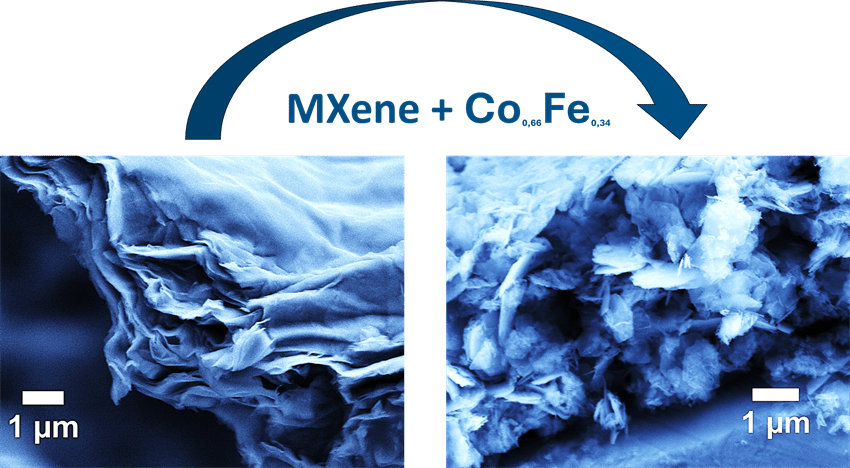Pioneering MXene Catalysts for the Green Hydrogen Revolution

Author: Quantum Server Networks
Source article: AZoM News
Unlocking the Power of MXenes for Sustainable Energy
As the global push toward carbon neutrality accelerates, the need for innovative materials to support clean energy technologies becomes ever more pressing. One such material—MXene—is now attracting significant attention for its potential in catalysis, particularly for green hydrogen production.
In a recent breakthrough published in Advanced Functional Materials, an international research team led by Michelle Browne at Helmholtz-Zentrum Berlin (HZB) has demonstrated how MXene-based composites, embedded with cobalt and iron, outperform conventional catalysts in the oxygen evolution reaction (OER)—a crucial step in water electrolysis for hydrogen generation.
MXenes: A Material with Unparalleled Versatility
MXenes are two-dimensional (2D) materials composed of transition metals and carbon or nitrogen. First discovered in 2011, MXenes possess remarkable electrical conductivity, high surface area, and customizable surface chemistries. These attributes make them ideal for applications in energy storage, sensing, and, increasingly, catalysis.
What sets MXenes apart in catalysis is their ability to host catalytically active nanoparticles within their layered structures. This internal surface loading can enhance the activity and stability of catalyst particles, leading to better performance and lower material usage.
Engineering Better Catalysts with Vanadium-Deficient MXene
Can Kaplan, lead author of the study, experimented with two variants of vanadium carbide MXenes: a pure V2CTx and a vanadium-deficient V1.8CTx. The latter has a higher internal surface area thanks to the introduction of vanadium vacancies—defects that ultimately improve catalytic behavior.
By embedding a precise Co0.66Fe0.34 alloy into these MXenes through a multi-step chemical process, the team was able to drastically improve the electrocatalytic performance. The most impressive results came from the vanadium-deficient MXene composite, where enhanced surface reactivity translated into superior OER efficiency.
From Lab to Industrial Scalability
Using the SOLEIL synchrotron facility in France, the researchers tracked the oxidation states of cobalt and iron during electrolysis using in situ X-ray absorption spectroscopy. These insights into the real-time behavior of catalyst particles provide a roadmap for further optimization.
Crucially, the team validated their findings not just at the laboratory scale, but also in a much larger electrolyzer setup—an essential step toward industrial application. "This makes our results really meaningful and interesting for industrial applications," Kaplan said.
Implications for the Green Hydrogen Economy
Green hydrogen—produced via electrolysis using renewable energy—is poised to become a cornerstone of the clean energy transition. However, current catalyst technologies rely heavily on precious metals like iridium and ruthenium, which are expensive and scarce.
MXene-based catalysts offer a compelling alternative. They use more abundant elements, are cost-effective to produce, and can be tailored for high performance through structural tuning. According to Browne, "MXene is a good choice for developing creative, highly efficient, and cost-effective catalysts."
Future Directions and Broader Impact
Although still in the early stages of development, MXenes are now firmly on the radar for sustainable energy applications. This study is one of the first to systematically explore their role as catalyst carriers in anion exchange membrane (AEM) electrolyzers, potentially revolutionizing how we produce hydrogen on a large scale.
As research progresses, we can expect MXenes to find applications not only in hydrogen production but also in carbon dioxide reduction, fuel cells, and other clean-tech sectors where catalytic efficiency and durability are paramount.
This development marks a significant stride toward affordable, scalable, and sustainable hydrogen technologies—a vital component of the world's decarbonization strategy.
Reference:
Kaplan, C., et al. (2025). "Enhancing CoFe Catalysts with V2CTx MXene-Derived Materials for Anion Exchange Membrane Electrolyzers." Advanced Functional Materials. DOI: 10.1002/adfm.202503842
Tags:
#MXene #GreenHydrogen #Catalysis #MaterialsScience #CleanEnergy #Electrolysis #HZB #2Dmaterials #Nanotechnology #QuantumServerNetworks

Comments
Post a Comment